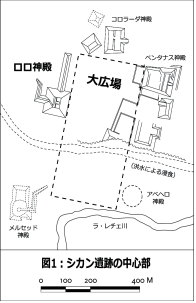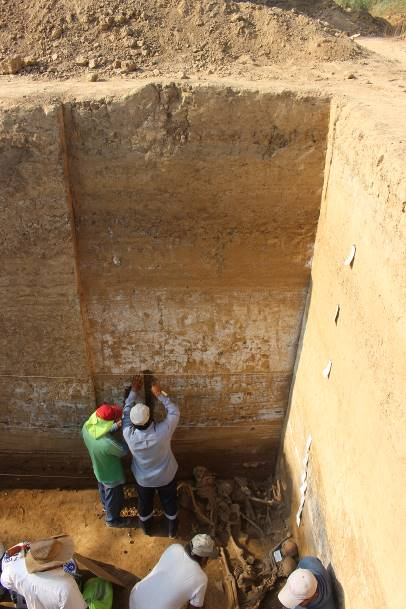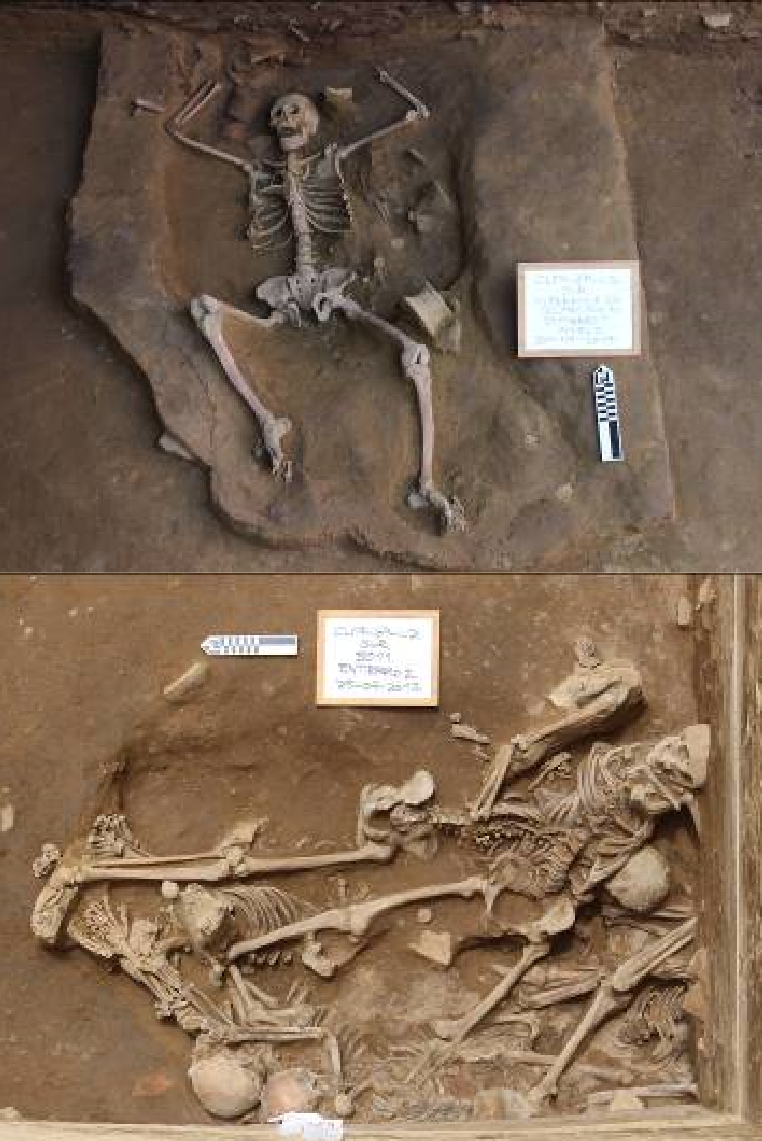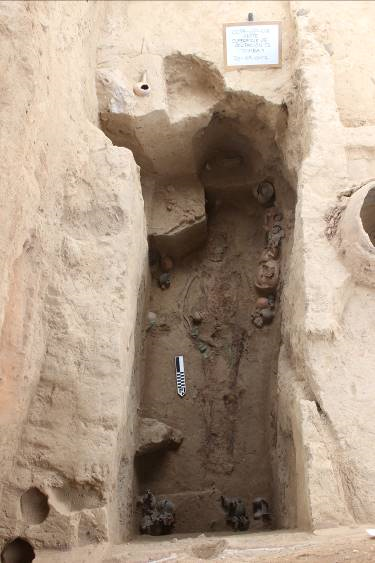







Home > Research > Research Highlights > Humanities > New Discoveries at Huacas de Sican on the Peruvian North Coast
date: 2018.02.09
Associate Professor Go Matsumoto Ph.D. (Anthropology)
It has traditionally been hypothesized that the prehispanic society called Sican, which flourished about 1000 years ago on the Peruvian north coast, collapsed due to devastating climatic catastrophes (draught and floods) around the end of the 11th century, and that its capital or Huacas de Sican was abandoned and replaced by another site nearby. Recent excavations by a research team led by Dr. Go Matsumoto (the associate professor at Yamagata University), however, raised the possibility that the capital was not abandoned even after the catastrophes. The research team aims to provide a new explanatory model concerning the resiliency of the society by investigating diachronically and thoroughly its interactions with natural environment.

▲Figure 1.
Central area of Huacas de Sican
The Sican emerged centering on a religious leader and prospered around AD 950-1100 based on fishery, large-scale irrigation agriculture, highly elaborate metallurgy, and long-distance trade. Huacas de Sican, where the above excavations took place, is thought to have been the first capital during the most prosperous times. Its core area consists of over a dozen pyramidal mound structures surrounding a large rectangular space called Great Plaza (Figure 1). Four excavation units were set up in line between two of those mound structures, Huaca Loro and Huaca Las Ventanas.
During the excavations, the research team meticulously documented and observed deep stratigraphic layers reaching about 5m below the present-day surface (Pic.1), in which they found some vestiges of floods and associated ritual activities including the sacrifices of 10 human bodies (Pic.2). These findings may suggest that the Sican fought against the social unrest triggered by the climatic changes through ritual sacrifices of their people and that the capital was not abandoned after the climatic changes.
Furthermore, the research team also found a tomb as well as a number of grave offerings in the middle the Great Plaza (Pic.3). Interestingly, the body was interred in the burial style of the preceding Mochica culture. This discovery suggests the concomitance of the multiple ethnicities in a single society, which is usually considered very difficult to prove by archaeological means.
The research team will carry out a thorough investigation into the interrelations between floods and social changes by addressing the corresponding soil layers deposited before, during, and after the floods. The team is also interested in implementing a comparative study with the research team led by the professor Masato Sakai who has been conducting his research in the Nasca area on the Peruvian south coast.

▲Pic.1
Deep stratigraphic layers and the sacrifices of human bodies

▲Pic.2
The sacrifices of human bodies

▲Pic.3
A tomb of goldsmith
Related Links